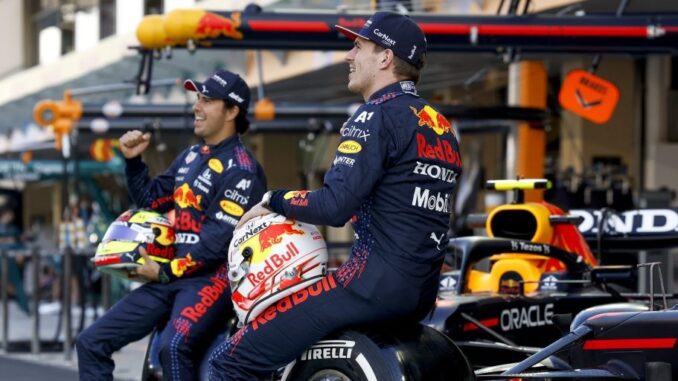
The completed transaction stands as a perplexing move for the Red Bull Racing Team, leaving many scratching their heads as to its rationale and potential implications. Delving into the intricacies of the deal, various aspects emerge that cast doubt on its coherence and strategic alignment with the team’s objectives.
Firstly, contextualizing the trade within the broader landscape of the team’s operations reveals discrepancies with its usual modus operandi. The Red Bull Racing Team is renowned for its calculated and strategic approach to driver selection and team management, often prioritizing synergy and long-term success over short-lived gains. However, the nature of this particular trade appears to diverge from this established pattern, prompting speculation and skepticism among fans, pundits, and industry insiders alike.
Central to the confusion surrounding the trade is its potential impact on the team’s overall performance and competitive standing. The Red Bull Racing Team has cultivated a reputation for fielding competitive cars and nurturing top-tier talent, fostering an environment conducive to success on the track. Introducing a new element through a trade could disrupt the delicate balance that the team has worked tirelessly to achieve, potentially undermining its competitive edge and jeopardizing its chances of securing podium finishes and championship titles.
Moreover, the trade raises questions regarding the allocation of resources and the utilization of valuable assets. In the high-stakes world of Formula 1, every decision carries inherent risks and rewards, with teams meticulously weighing the potential benefits against the associated costs. In this instance, the Red Bull Racing Team may be parting ways with valuable assets, such as talented drivers or technical expertise, without a clear guarantee of commensurate returns or tangible improvements in performance.
Furthermore, the timing of the trade warrants scrutiny, as successful teams often leverage strategic opportunities to bolster their roster or address areas of need. However, if this trade occurs outside of the customary windows for such transactions, it may signal a sense of urgency or desperation on the part of the Red Bull Racing Team, potentially hinting at underlying issues or internal strife within the organization.
Beyond its immediate on-track implications, the trade could also have broader ramifications for the team’s brand reputation and commercial viability. The Red Bull Racing Team occupies a prominent position within the Formula 1 ecosystem, with a global fan base and a strong presence in the world of motorsport. Any move that undermines the team’s credibility or erodes fan confidence could have far-reaching consequences, impacting sponsorship deals, merchandise sales, and other revenue streams essential for sustaining its operations.
Furthermore, the trade may also have implications for the team’s long-term strategic objectives and aspirations within the sport. Formula 1 is a fiercely competitive arena, with teams vying for supremacy and striving to outmaneuver their rivals both on and off the track. In this hyper-competitive environment, every decision – including trades – must be carefully calibrated to maximize the team’s chances of success while mitigating potential risks and pitfalls along the way.
Additionally, the trade’s impact on team dynamics and morale cannot be overlooked. Formula 1 is a team sport, requiring seamless coordination and collaboration among drivers, engineers, mechanics, and support staff to achieve optimal results. Introducing a new driver or personnel through a trade could disrupt this delicate ecosystem, potentially causing friction or discord within the team ranks and undermining its overall cohesiveness and effectiveness.
In conclusion, while trades are an integral part of the Formula 1 landscape and can sometimes yield significant benefits for the parties involved, not all transactions are created equal. The trade in question presents a conundrum for the Red Bull Racing Team, raising doubts about its rationale, strategic alignment, and potential impact on the team’s competitiveness, brand reputation, and long-term aspirations within the sport. Moving forward, it will be incumbent upon the team’s leadership to carefully assess the risks and rewards of any trade, ensuring that it aligns with the team’s overarching objectives and enhances its prospects for success both on and off the track.
Leave a Reply